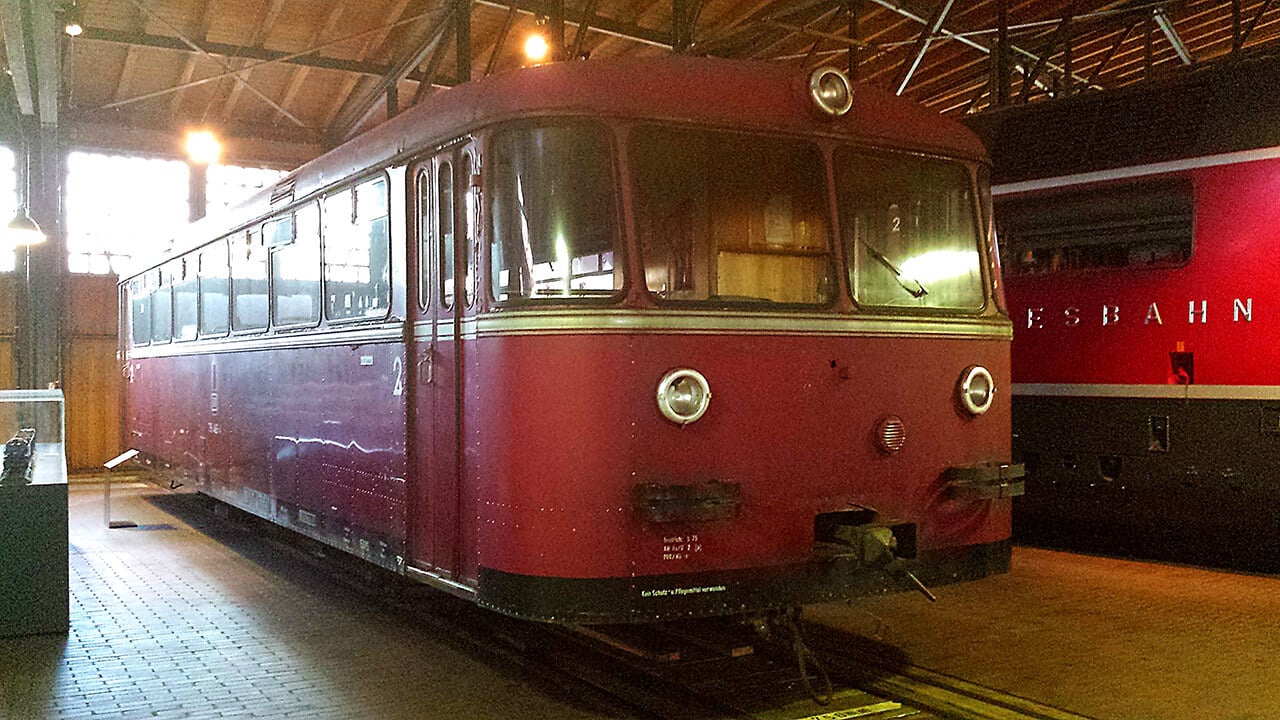DB Class 798 (DB series VT 98) is a branch line railcar
Search
The DB series VT 98 are called branch line railcars. From 1968 onwards, they were operated as the DB Class 798 and 796 series. These series are also colloquially referred to as Uerdingen rail buses.
| Manufacturer: | Waggonfabrik Uerdingen, MAN, WMD |
| Length: | 13,950 mm |
| Numbering: | VT 98 901-903 VT 98 9501-9829 From 1968: 798 901-903 798 501-829 |
| Weight: | 18.9 t |
| Years of construction: | 1953, 1955-1962 |
| Top speed: | 90 km/h |
| Retirement: | 2000 |
| Number: | 329 |
| Power: | 2x 110 kW |
| Motor type: | Büssing AG U 10 |
| Power transmission: | mechanical |
| Brake: | compressed air (KE-P-Mg type) |
| Axle formula: | Bo |
| Type: | B |
| Seats: | 56 + 2 |
| Interestimg facts |
|---|
| The DB Class 798 railcars belong to the Baurt with the Bo axle arrangement. The Bo axle formula is two individually driven axles in the same frame. More interestimg facts |
The history of the railcar BR 98
The rail car DB Class 798 was developed in the mid 1950s from the VT 95.9, which was too weakly motorized for many routes with only one traction motor. The DB Class 798 had two traction motors and, in contrast to the VT 95, had buffer planks with screw couplings so that it could carry additional railcars as towing railcars. This was used both for individual freight wagons (express freight express wagons) and for passenger coaches. The additional load that the rail bus VT 98 could pull was considerably lower than for locomotives. Thanks to the standard coupling devices, the VT 98 could also be placed at the end of other trains and thus transported with external power.
All rail bus types were equipped with Büssing AG‘s U 10 underfloor engines, which provided the same drive as the D2U double-decker buses in Berlin. The six-speed transmission was supplied by ZF Friedrichshafen AG. The accelerator pedal was replaced by a hand throttle lever on the left side of the driver’s seat. The railcars also had an engine dust brake for use on steep sections.
Due to its simplicity, the passenger compartment resembled buses or trolleybuses. As a small extra, the backrests of the benches could be folded down to sit in the direction of travel, for example, or to accommodate a small group vis-à-vis.
To the 329 railcars, also 220 sidecars VB 98 with packing compartment, as well as further 100 without packing compartment and 310 driving trailer VS 98 were manufactured. 3 sidecars were converted to VS 98. The most common type of combination at DB was the VT-VB-VS combination. However, there were also shorter units (VT+VS), occasionally the VT, i.e. the motor vehicle, was on its own. Longer variants, up to six-car units (VT+VB+VS+VT+VB+VS) were only formed when there was a particularly high number of passengers.
The DB Class 798 were changed in 1968 to type number 798 and the sidecars were given numbers 998.0-3, the control cars 998.6-9. In the control cars the order number was additionally increased by 600 (VS 98 001 became 998 601-9).Some of these railcars were modernized and received the product colors at that time, white mint green, of the DB. These rail buses operated on the Chiemgaubahn and later until 2014 as “Ulmer Spatz”. Otherwise the rail buses kept their typical colouring, purple red RAL 3004.
For one-man operation, 47 railcars, 23 sidecars and 45 control cars were converted in 1988. Essential innovations were pneumatic door locking devices as well as payment tables for the driver. These vehicles were given the numbers 796 and 996 respectively. The Turkish State Railroad (TCDD) acquired 25 VT 98 in 1989, which called it the RM 3000 series. In addition to the railcars RM 3001 to RM 3025, 25 control cars (RP) and 15 sidecars (RT) were added to the TCDD. A three-car unit of the VT 98 was acquired by the “Initiative Fuchstal-Bahn” in 2015 and has been used as a special tourist train in the Schongau area since June 2015.

